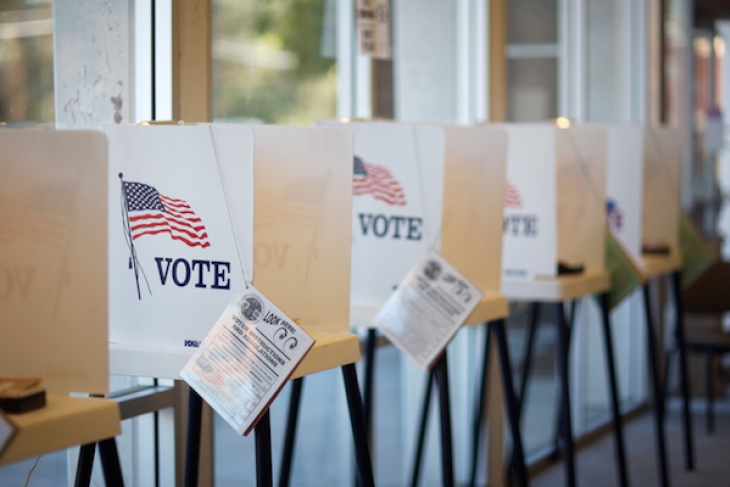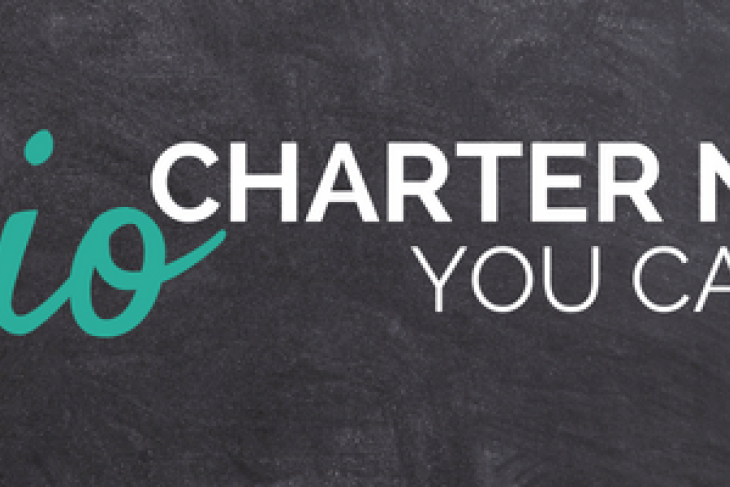A recent Atlantic article by Amy Lueck critical of school choice rightly celebrates the civic purpose of the traditional American public high school, “not only as an academic training ground, but also as a center for community and activity in American cities.” Shared experiences like school dances, football games, pep rallies, and protests, as well as the uniting of families from different backgrounds, can be beneficial for those involved, and high schools facilitate them better than most civic and social institutions.
But she’s wrong in believing that working to give children and parents more options “reflects a distrust of education as a communal goal, not just an individual one.” Lueck erred in accusing school choice of “dismantling” this model. Proponents are not “leaving the public high school for greener pastures,” and the realization of our goals would not be an “abandonment of the American high school” or “the democratic project of the ‘common school’ that helped shape the American city.”
That is because the “common school” that Lueck idealizes—a single public high school for every teenager in a given community—ceased generations ago for many families, and is not a necessary condition for the communal benefits she espouses. Worse, as she acknowledges but downplays, it has long perpetuated inequality, failed to serve families who want or need something different, and produced poor academic outcomes for disadvantaged families.
Most urban districts moved away from neighborhood high schools decades ago. In Washington, D.C., for example, even before charter schools emerged in 1996, a huge percentage of kids were going to high schools outside of their neighborhoods. In New York City, too, where there are some 300 traditional public high schools, eighth graders submit an application listing as many as twelve programs in order of preference. And in the last two decades, Chicago nearly doubled the number of public high schools available to residents. “Major reforms…focused on increasing the number of high-quality public school options, by splitting up large high schools, creating new small high schools by design…[and opening] more selective-enrollment high schools and special programs within high schools,” write Lisa Barrow and Lauren Sartain, a senior economic at the Federal Reserve Bank of Chicago and a Senior Research Analyst at the University of Chicago, respectively.
Although it’s true that most suburbs and small towns still do have neighborhood high schools, Lueck overstates their value. Yes, they can build a sense of local community for the families and students that are actively involved: kids who play sports or are in the marching band, families who also see each other at church or the neighborhood swimming pool. But those schools, which tend to be big and impersonal, fail to serve a lot of kids and families who are alienated from all of that. This is why so many people look back on their high school years with disgust. And this is exacerbated by the racial and economic segregation inherent in neighborhood assignments—a major impetus for doing away with them in urban areas.
Nor does Lueck’s preferred version of the traditional public high school have a monopoly on the sort of community building that matters. Research has shown, for example, that some schools of choice develop stronger civic values than traditional public schools do. Earlier this year, my colleague Robert Pondiscio wrote about the positive effects of Democracy Prep, a charter school network in New York City that educates more than 5,000 students. A study conducted by Mathemathica found that “Democracy Prep increases the voter registration rates of its students by about 16 percentage points and increases the voting rates of its students by about 12 percentage points.” And it accomplishes this by having its kids participate in annual voter registration campaigns, requiring graduates to pass the U.S. citizenship test, and encouraging students to volunteer, do food drives, and learn through service. Research also shows that schools choice produces students who hold more progressive views on diversity and are less likely to commit crimes. In communities without assigned neighborhood schools, students still form fond memories of school dances, they still attend pep rallies, and fans and participants of the athletic programs still bond over big wins and hard losses. They also still mourn together in times of tragedy, share enthusiasm for social causes, and celebrate as one in times of triumph and elation.
Despite Lueck’s lamentations, charter schools and vouchers are compatible with all of this. They do not, in other words, have the downside she claims they do. And their upside—the reason why proponents push for them—is that they stand to solve many of the inherent problems of the traditional public high school model.
That model is broken. And its flaws manifest in ugly, harmful ways. Schools regularly grant diplomas to students who aren’t ready for college, career, or adulthood. Teachers and administrators encourage everyone to apply to and attend college, even those who aren’t ready and end up wasting time and money chasing a degree they never earn. Districts ignore promising career and technical education programs that help young people find gainful, secure vocations. And education professionals everywhere go on pretending that a single kind of school can effectively serve the varied needs of each and every child.
Those most hurt by all of this are our most vulnerable: poor and minority children, English language learners, and those from all walks of life for whom the traditional school model isn’t a good fit. Consider, for example, that nationally almost 38 percent of twelfth graders are below the basic level of achievement in math on the National Assessment of Education Progress, as of 2015, the most recent year for which data are available. And basic is a low bar; proficient is the one they’re supposed to clear. For those eligible for free or reduced priced lunch, the number is 54 percent. For black and Hispanic students, it’s 64 and 53 percent, respectively. The trends in reading are comparable.
Then, after they leave high school, just 40 percent of black enrollees at four-year public universities graduate within six years—a figure that is 21 percentage points below their white peers, and 18 percentage points below the nationwide average. It’s even worse for students who must take remedial courses because they aren’t prepared for college classes when they arrive on campus. Fifty percent never complete their remedial education, and less than 25 percent who attend community college earn a degree within eight years. These are not the results of a successful system.
Perhaps these dismal academic outcomes are why some choice opponents have pivoted to other supposed benefits of the traditional high school. Maybe that's what all this talk about its ostensible unique and exclusive communal advantages is about. But there’s nothing singularly special about that model. Instead, it’s like any other design: It works well for some students, and fails others. So instead of being the only public option, young Americans would be better served if it were one among many—at least in places big enough to support meaningful choice. Those high schoolers would still have the quintessential teenage experiences, and communities would benefit. The big difference would be that more children would be getting the education they want and deserve.





